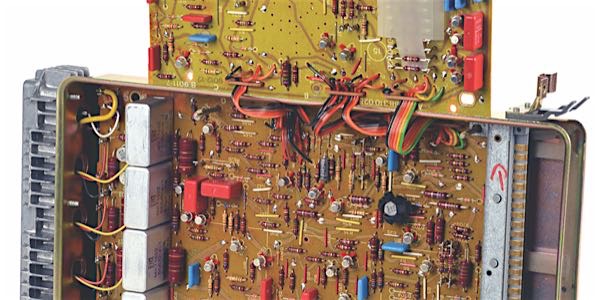
If you’re old enough to have been fixing cars during the early days of the computer car age (basically before 1995), I’m sure you remember the old two-digit OBD1 codes. Back then, a scanner was a luxury item — not a necessity. For the most part, a paper clip, jumper wire or analog voltmeter was all the tools you needed to read codes. In fact, Chrysler products could be coded by turning the key from off to on three times within five seconds. It was the era of sitting behind the wheel counting flashing lights and watching the sweep of an analog meter. Oh, how times have changed!
Recently, I was at a local tech school, and we pulled a 1984 Buick into the service bay for a little old-school demonstration. The task for the students was to read the codes. Every student reached for a modern scanner and approached the repair procedure as if it was a much newer car.
The first thing they experienced was that the OBD II connector wouldn’t fit. Then, once they located the adapter plug, the scanner wouldn’t turn on. They then had to rummage through the box to find the external 12V power supply cable. These students were taught well and had a pretty good idea how to get the job done, but they needed some old-school training. Before they could get all their connectors attached, I had already pulled out my magic paper clip and crossed the A and B terminal in the ALC. When I turned the key on, the service light went through the usual code 12 start-up and ended with the standard code 55. The look on their faces was priceless, and they were even more astonished that this was the preferred method of getting to the codes back then.
Up until OBD II, there were less than a hundred two-digit codes for most makes and models. Each of the codes had more to do with engine emissions and transmission issues than anything else. ABS systems were separate and required a different terminal grounded, and most of the body systems weren’t diagnosed with a scanner, either. The real challenge was to actually read the different voltage and resistance values associated with whatever the code was referring to. A scanner could read these values, but that presupposes you actually had one. For the most part, the diagnostic procedures also included the known-good values for each of the sensors.
Something else to consider is that most of the aftermarket scanners of the era had just about the same functions as the factory scanners — with a few exceptions. Cadillacs had their own special features and didn’t require a scanner. You could code the car by merely pressing the off and warmer buttons on the HVAC control head and watch the instrument cluster for the code information. It also had all the various parameters included and could be obtained by going through the HVAC control head menu.
Diagnostic systems have evolved far beyond those early era models. I find the modern scanner far simpler to use and easier to find the needed information and parameters with. Is it safe to say OBD1 challenges were easier? No, I don’t think so. However, compared to today’s diagnostic challenges, they sure seem that way. Back then, we didn’t have today’s sophisticated systems with multi-data lines to worry about — things like the baud rate were more important in diagnosing a computer glitch.
The real challenge is staying current, but still having a working knowledge of the older OBD1 diagnostic procedures. After all, you never know when a 1984 Buick may roll into your service bay and you’ll need to pull out your magic paper clip.













